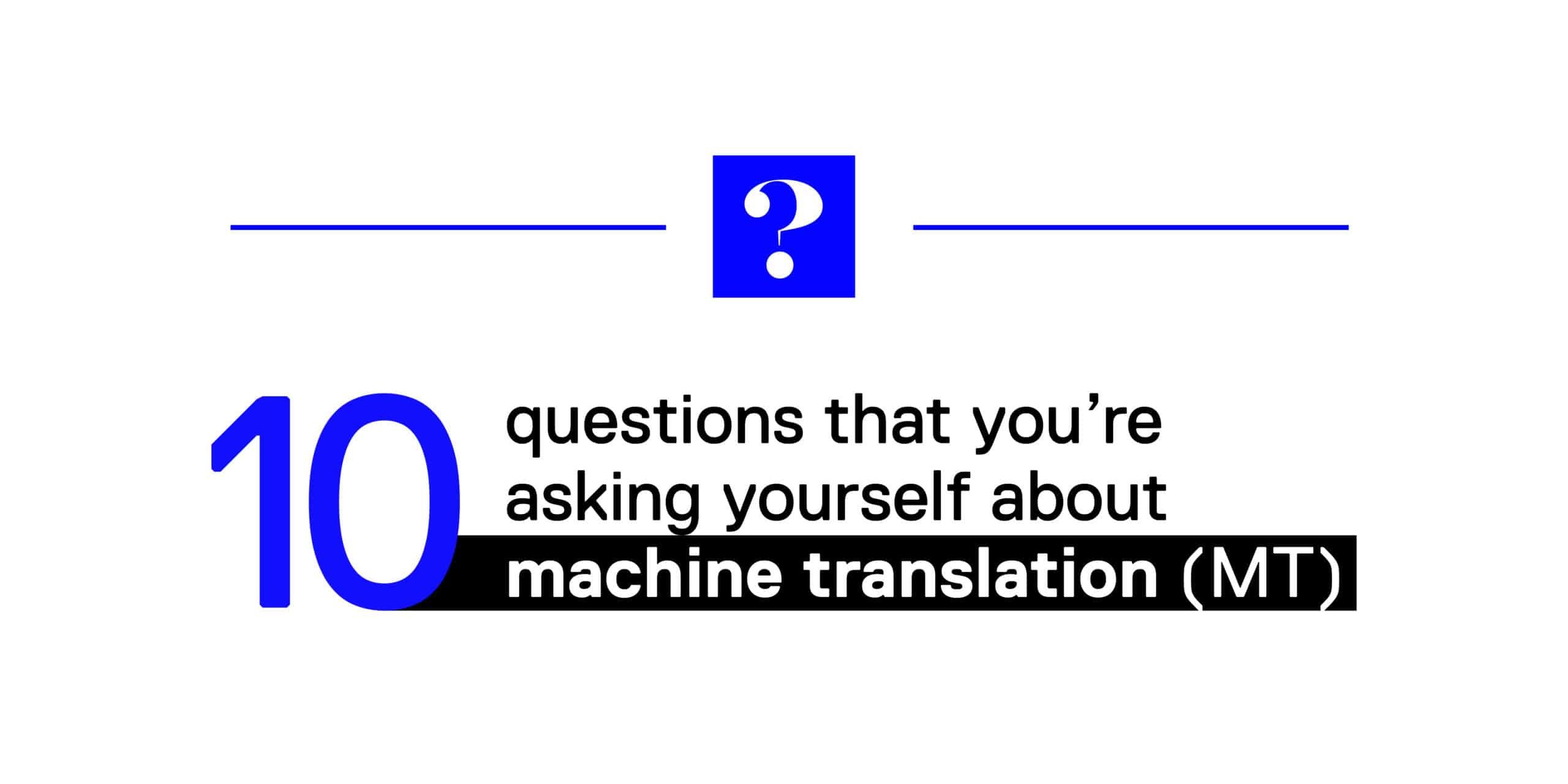Machine translation has become an almost indispensable technological necessity in today’s world. With the help of neural-based translation engines, large volumes can be translated, with faster turnaround times and at lower costs when compared with 100% human translation. However, there are still many unknowns, so let us try to answer the questions we are asked most often.
1. Nowadays, what level of quality can be achieved with machine translation?
Machine translation can provide a comprehensible and acceptable solution 80% of the time, but the issue lies in the impact of the errors. It depends on what you use it for. If the purpose is to get to understand the general content of a text, it can be very useful. If we use it for a specific publication, then we must pay attention: it must be corrected, as it will often include incorrect, inadequate or incomprehensible phrases.
2. What are the differences between machine translation and post-edited translation?
The distinction between the two is whether or not a human review of the entire machine-translated text has been carried out. A machine translation that has been revised by a specialist translator (the whole text, from the first to the last word, and compared with the original) is known as a post-edited translation. Needless to say, the quality of the post-edited translation is far superior.
3. What are the main problems with machine translation?
Generally speaking, we encounter errors related to:
- Terminology: terms specific to your sector/company/environment that should be translated in one way, but are translated in another.
- Ambiguity: phrases that a person understands, but that the machine cannot discern.
- Contextual references: cultural, social, political, etc. references.
- Internal coherence: misuse of formal language, masculine/feminine genders, inconsistent translations of the same term, etc.
- Literal translation of complex structures (lack of naturality).
- Inability to understand the human factor: complex texts, poorly written texts, idiomatic expressions, double meanings, etc.
4. Are there different types of post-editing?
Yes, you can decide on the extent of the revision to your machine translation. For example:
- Correction of major errors: which involves the correction of formal errors or errors regarding content transmission.
- Stylistic correction: which involves changes to the order of the text and selection of alternatives + linguistic/content error correction.
The former is referred to as light post-editing and the latter as full post-editing.
5. If I publish an unreviewed machine translation, what risks do I run?
We recognise that a machine translation contains errors. The level of risk depends on the consequences of a misunderstanding of the original text caused by a translation error. The risks may be legal (for example, safety aspects of an instruction manual), financial (breach of contract) or commercial (loss of sales or damage to reputation).
6. What are the differences between “classic” machine translation and AI-based translation (e.g., chatGPT)?
Neural translation has achieved a level of quality that AI-based translation does not decisively outperform. The latter improves certain aspects related to terminological consistency and intra-textual homogeneity, but not by much. ChatGPT still makes translation errors that require human revision to ensure good quality. However, we do use AI to enhance certain translation processes.
7. If a machine translation works well in English, does it also work in German or Dutch?
Not necessarily. Machine translation engines (Google, DeepL, Bing, etc.) use databases containing millions of words from parallel texts (original+translation). The most widely used languages in the world (e.g., English and Spanish) generate much more content for these databases and thereby produce better results than languages with a smaller document base.
8. Can machine translation be applied to any kind of format?
Yes, machine translation is just another part of a translation management project that involves using different technologies. In order to be able to work with texts from encoded files (html, xml, xliff, json…) or from Adobe software (InDesign, Photoshop, Illustrator…), among many others, conversion filters are used to extract the text for machine translation and, of course, post-editing.
9. How do I benefit from having my machine translation carried out by LexiaPark?
We know exactly how involved we need to be in a machine translation in order to achieve the quality you need. Whatever the intended use, we recommend the ideal solution, considering the target level of quality and the cost-effectiveness of the translation. In addition, we can enhance the machine translation with a customer-specific glossary.
Each translation engine delivers different results depending on the languages and sectors involved. We select the right engine or engines for each project.
LexiaPark can post-edit a machine translation already produced by the client, but the advantages of a good preliminary selection of the engine are lost. Furthermore, the cost of the machine translation provided by LexiaPark is as low as that of DeepL or Google.
And, naturally, with us you also benefit from the editing of your formatting, repetitions and the retention of your personalised translation memory.
10. What is the difference in cost between the different kinds of translations?
We can summarise this in a table as a guideline. Let us take, for example, the translation of a text of 1000 words (3 pages). In the cost column you can see the cost of the different services.
| Service | Details | Cost (€) - 1000 words |
|---|---|---|
| Classic | Human translation + Proof-reading + Quality check (including Custom Glossary + Translation Memories) | 100 |
| Basic | Human translation + Quality check (including Custom Glossary + Translation Memories) | 80 |
| Full Post-editing | Machine translation + Post-edit + Proof-reading (including Custom Glossary + Translation Memories) | 60 |
| Light Post-editing | Machine translation + Post-edit (including Custom Glossary + Translation Memories) | 50 |
| Machine Translation + Glossary | Machine translation (including Custom Glossary) | 1 |
| Machine Translation | Machine translation | 0,5 |

